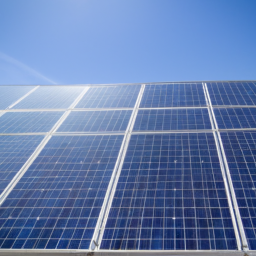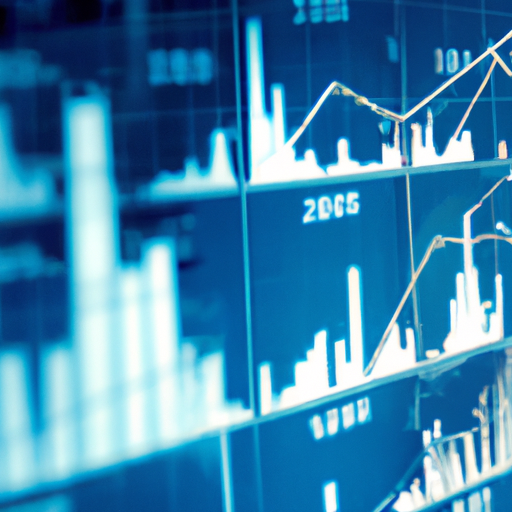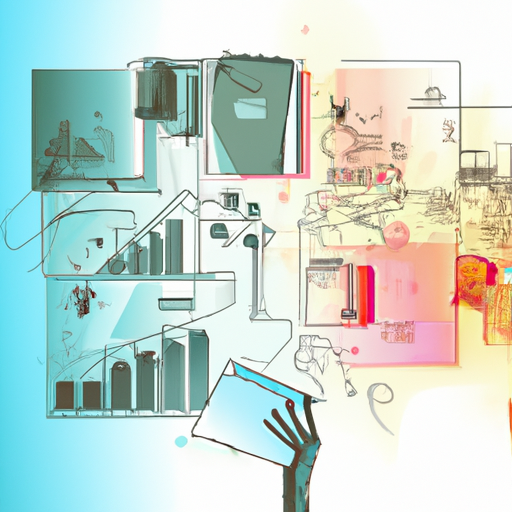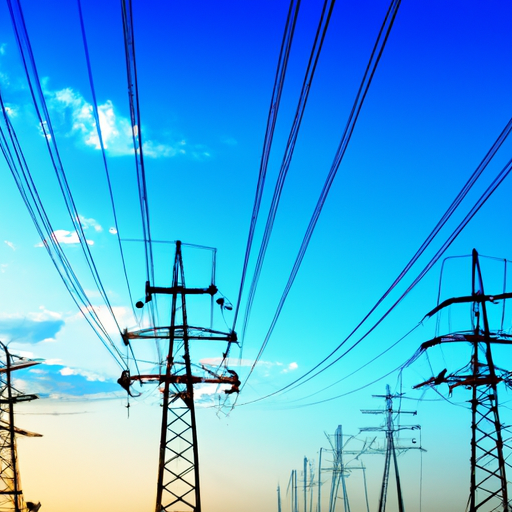Utilities Industry Trends
So, you’re curious about the latest happenings in the utilities industry, huh? Well, buckle up because we’re about to take a wild ride through the ever-evolving world of utilities. From groundbreaking technological advancements to shifting consumer behaviors, this article will serve as your trusty guide, revealing all the game-changing trends and developments shaping the industry’s landscape. Get ready to witness the rise of renewable energy, the impact of smart grids, and the growing importance of customer-centric approaches. It’s time to uncover the exciting future of the utilities industry!
Table of Contents
Smart grid technology
In recent years, we have witnessed a significant transformation in the utilities industry, thanks to the advent of smart grid technology. This innovative approach to energy distribution and management has revolutionized the way we generate, transmit, and consume electricity. Smart grid technology encompasses a wide range of advancements and improvements, which can be categorized into several key areas.
Increased integration of renewable energy sources
One of the primary goals of smart grid technology is to increase the integration of renewable energy sources into the grid. As the world recognizes the urgent need to transition to cleaner and more sustainable forms of energy, the smart grid plays a crucial role in facilitating the seamless integration of wind, solar, hydro, and other renewable sources. By incorporating advanced monitoring and control systems, the smart grid enables utilities to efficiently manage the variability and intermittency associated with renewable energy generation.
Improved grid reliability
Grid reliability is paramount for ensuring uninterrupted power supply to consumers. Smart grid technology introduces numerous enhancements that significantly improve grid reliability. Through the deployment of advanced sensors and monitoring devices, utilities can now detect and address faults and outages in real-time. This proactive approach minimizes the duration and impact of any disruptions, thereby enhancing the overall reliability and quality of electricity supply.
Enhanced energy management and efficiency
A key objective of the smart grid is to promote energy management and efficiency. By leveraging advanced metering infrastructure, utilities have access to real-time data on energy consumption patterns. This valuable information empowers consumers to track and manage their energy usage, leading to greater awareness and conservation. Additionally, the implementation of automated demand response systems allows utilities to optimize their energy resources by dynamically adjusting consumption patterns during peak hours. Such measures not only improve efficiency but also help reduce carbon emissions and support the integration of renewable energy sources.
Decentralization of power generation
Traditionally, power generation has been centralized, with large-scale power plants supplying electricity to the grid. However, the rise of distributed energy resources (DERs) and the increased adoption of microgrids have tipped the scales towards decentralization. This shift brings about a multitude of benefits, including increased resilience, improved grid stability, and reduced transmission losses.
Rise of distributed energy resources (DERs)
DERs, such as rooftop solar panels, small wind turbines, and even residential-scale fuel cells, are playing an increasingly significant role in the power generation landscape. These localized, decentralized energy sources empower consumers to generate their own electricity and reduce their reliance on centralized generation. DERs not only contribute to the overall diversification of the energy mix but also promote sustainability by harnessing renewable resources at the point of consumption.
Increased adoption of microgrids
Microgrids serve as localized grids that can operate independently or in conjunction with the main grid. By integrating DERs, energy storage systems, and advanced automation technologies, microgrids provide reliable and resilient power supply to specific communities or facilities. In addition to ensuring uninterrupted electricity during grid disruptions, microgrids enable the integration of renewables and promote local energy independence. Their ability to seamlessly transition between grid-connected and islanded modes allows for efficient utilization of DERs and enhances the overall stability and efficiency of the power system.
Impact on traditional utility business models
The decentralization of power generation through DERs and microgrids poses challenges to the traditional utility business models. As consumers become prosumers (both producers and consumers of electricity), their role in the energy ecosystem shifts. Utilities need to evolve from being purely energy providers to becoming facilitators and enablers of energy services. This transformation requires utilities to adapt to changing market dynamics, explore new revenue streams, and reimagine their role in managing distributed energy resources effectively.
Digitalization and automation
The rise of smart grid technology is closely intertwined with the digitalization and automation of various aspects of the utilities industry. By harnessing the power of data, artificial intelligence, and advanced automation technologies, utilities can optimize operations, improve customer service, and enhance overall system performance.
Advanced metering infrastructure
Advanced metering infrastructure (AMI) forms the backbone of the smart grid by enabling two-way communication between utilities and consumers. AMI replaces traditional electromechanical meters with digital meters capable of collecting and transmitting real-time energy consumption data. This granular data enables utilities to monitor, analyze, and optimize energy flow, billing accuracy, and demand response programs. Additionally, AMI facilitates remote meter reading, eliminating the need for manual interventions and enhancing operational efficiency.
Artificial intelligence for predictive maintenance
Artificial intelligence (AI) is revolutionizing maintenance practices in the utilities industry. By leveraging AI algorithms, utilities can analyze vast amounts of data collected from smart sensors and predict when equipment might fail or require maintenance. This shift from reactive to proactive maintenance strategies minimizes downtime, reduces costs, and extends the lifespan of critical assets. AI-powered predictive maintenance not only enhances grid reliability but also optimizes the utilization of maintenance resources, resulting in increased efficiency and improved customer satisfaction.
Automated demand response systems
Automated demand response (ADR) systems are critical for achieving a balance between electricity supply and demand. By leveraging real-time data and analytics, ADR systems allow utilities to dynamically adjust electricity consumption based on prevailing grid conditions and consumer preferences. During periods of peak demand or supply constraints, utilities can automatically reduce or shift non-essential loads, optimizing energy resources and avoiding potential blackouts. ADR not only improves grid stability and reliability but also enables consumers to actively participate in load management and contribute to a more sustainable energy future.
Transition towards a cleaner and sustainable future
The pursuit of a cleaner and more sustainable future is driving the transition in the utilities industry. As the world grapples with the challenges posed by climate change, utilities are taking bold steps to embrace renewable energy, electrify transportation, and develop energy storage technologies.
Growing investment in renewable energy projects
Renewable energy projects, such as solar and wind farms, have witnessed a surge in investments globally. Utilities are increasingly diversifying their energy portfolios by incorporating renewable sources into their generation mix. This not only reduces reliance on fossil fuels but also helps mitigate climate change and reduce greenhouse gas emissions. Furthermore, the falling costs of renewable technologies, coupled with government incentives and favorable policies, have accelerated the adoption of clean energy solutions, paving the way for a greener future.
Shift towards electrification of transportation
The electrification of transportation is a key component of the transition towards a cleaner and more sustainable future. Electric vehicles (EVs) offer a significant opportunity to reduce carbon emissions and dependency on fossil fuels in the transportation sector. Utilities are investing in the development of EV charging infrastructure, exploring vehicle-to-grid (V2G) solutions, and collaborating with automakers to accelerate the adoption of EVs. By integrating EV charging stations with the smart grid, utilities can manage and optimize charging patterns, accommodate the increased electricity demand, and foster the widespread adoption of electric mobility.
Development of energy storage technologies
Energy storage technologies play a vital role in enabling the integration of renewable energy sources and ensuring grid stability. As the penetration of intermittent renewables increases, utilities are investing in energy storage solutions, such as batteries, pumped hydro storage, and advanced flywheels. These technologies store excess energy during periods of low demand and release it when demand exceeds supply, thereby balancing the grid and improving reliability. Energy storage not only supports the integration of renewables but also enhances grid resilience, reduces peak demand, and enables greater energy independence for consumers.
Consumer empowerment and engagement
The advent of smart grid technology has empowered consumers like never before. With access to real-time data, personalized energy services, and smart home technologies, consumers can actively participate in energy management, make informed decisions, and reduce their carbon footprint.
Rise of prosumers
The rise of prosumers is a direct consequence of the smart grid revolution. Prosumers, as the name suggests, are consumers who are also producers of electricity. By installing rooftop solar panels or other distributed energy resources, prosumers can generate their own energy and even sell excess electricity back to the grid. This transition from passive consumers to active participants transforms the relationship between utilities and consumers, fostering a more collaborative and sustainable energy ecosystem.
Demand for personalized energy services
With the proliferation of smart devices and data-driven solutions, consumers are increasingly demanding personalized energy services. Smart grid technology enables utilities to offer tailored energy solutions that align with consumer preferences and behavior. From time-of-use pricing to energy efficiency recommendations, personalized energy services empower consumers to make informed choices, optimize consumption patterns, and reduce energy costs. This shift towards personalized services enhances customer satisfaction, promotes energy conservation, and builds a more resilient energy system.
Increased use of smart home technologies
Smart home technologies are rapidly gaining popularity, driven by the desire for convenience, comfort, energy efficiency, and security. Connected devices, such as smart thermostats, smart lighting systems, and intelligent appliances, enable consumers to remotely monitor and control energy usage within their homes. By integrating smart home technologies with the smart grid, consumers can actively manage and optimize their energy consumption, automatically adjust settings based on occupancy, and even participate in demand response programs. This level of control and automation not only enhances consumer comfort but also contributes to energy savings and overall grid efficiency.
Resilience and cybersecurity
As the utilities industry embraces smart grid technology, ensuring the resilience and cybersecurity of critical infrastructure becomes paramount. The increased digitization and interconnectivity make the industry more susceptible to cyber threats and potential disruptions. Utilities must proactively mitigate risks, implement robust cybersecurity measures, and strengthen grid resilience to counteract potential natural disasters and other unforeseen events.
Mitigating risks to critical infrastructure
Critical infrastructure, such as power plants, substations, and control systems, are prime targets for cyberattacks and physical disruptions. Utilities must adopt a multi-layered approach to mitigate these risks and protect their assets. This includes implementing stringent access controls, regular cybersecurity assessments, and robust incident response plans. By continuously monitoring and assessing vulnerabilities, utilities can identify and address potential risks, enhancing the overall security and resilience of the grid.
Implementing robust cybersecurity measures
As utilities increasingly rely on interconnected systems and digital technologies, cybersecurity becomes a top priority. Robust cybersecurity measures are critical for protecting against unauthorized access, data breaches, and potential disruptions. Utilities must deploy state-of-the-art intrusion detection systems, encryption protocols, and continuous monitoring solutions to detect and address threats in real-time. Additionally, the adoption of industry best practices, employee training programs, and close collaboration with cybersecurity experts can help utilities stay ahead of evolving cyber threats and safeguard critical infrastructure.
Ensuring grid resilience in the face of natural disasters
Natural disasters, such as hurricanes, earthquakes, and wildfires, pose significant challenges to the utilities industry. To ensure grid resilience, utilities must assess the vulnerabilities of their infrastructure, implement measures to mitigate impact, and develop robust contingency plans. This includes investing in redundant systems, deploying real-time monitoring technologies, and establishing emergency response procedures. By improving infrastructure resilience and enhancing coordination with emergency management agencies, utilities can minimize downtime, accelerate the recovery process, and ensure the continuity of essential services during times of crisis.
Regulatory and policy changes
The transformation of the utilities industry necessitates a corresponding evolution in regulatory frameworks and policies. To facilitate the adoption of innovative technologies, support energy efficiency initiatives, and promote grid modernization, governments and regulatory bodies must enact favorable policies that balance the interests of all stakeholders.
Evolution of utility business models
The integration of distributed energy resources, advancements in digital technologies, and changing consumer expectations result in significant shifts in utility business models. To adapt to the changing landscape, regulators must evolve their frameworks to enable utilities to embrace innovation, diversify revenue streams, and effectively manage the transition to decentralized power generation. Policies that promote fair compensation for prosumers, encourage investment in renewable energy, and foster competition within the energy marketplace are crucial for shaping the future of the utilities industry.
Support for energy efficiency initiatives
Energy efficiency plays a vital role in achieving sustainability goals and reducing carbon emissions. Governments and regulatory bodies have a crucial role to play in incentivizing investments in energy-efficient technologies and promoting energy conservation. Policies that encourage utilities and consumers to adopt energy-efficient practices, such as energy audits, demand-side management programs, and building codes, can significantly contribute to reducing overall energy consumption and creating a more sustainable energy future.
Promotion of grid modernization
Grid modernization is essential to support the widespread deployment of smart grid technologies and reap their full benefits. Regulators can play a pivotal role in promoting grid modernization by initiating regulatory reforms, streamlining approval processes, and encouraging utilities to invest in smart grid infrastructure. This includes policies that incentivize the deployment of advanced sensors, automation technologies, and demand response systems. By actively supporting grid modernization, governments and regulatory bodies can foster innovation, enhance grid reliability, and improve overall system performance.
Aging infrastructure and investment needs
The aging infrastructure within the utilities industry poses significant challenges in terms of reliability, safety, and efficiency. To ensure the delivery of reliable and affordable electricity, utilities must renew and upgrade their infrastructure. However, these investments come at a substantial cost and require long-term planning and funding.
Renewal and upgrade of aging utility infrastructure
Many utilities around the world are grappling with aging infrastructure, including power plants, transmission lines, and distribution networks. These aging assets require renewal, upgrades, and in some cases, replacement. Utilities must invest in upgrading aging infrastructure to improve reliability, increase capacity, and meet the growing demand for electricity. This includes modernizing substations, replacing outdated transformers, and implementing intelligent automation systems to enhance performance and efficiency.
Growing investment requirements
Given the scale and scope of the required infrastructure upgrades, utilities face significant investment requirements. These investments encompass not only renewing existing infrastructure but also expanding to accommodate increased demand, integrating renewable energy sources, and enhancing grid resilience. Governments, policymakers, and regulatory bodies must work closely with utilities to develop sustainable funding mechanisms, such as long-term bonds, public-private partnerships, and innovative financing models. By addressing the investment needs of utilities, stakeholders can ensure the reliable delivery of electricity and support the transition towards a cleaner and more sustainable energy future.
Impact of aging workforce on the industry
The utilities industry is also facing a significant challenge in terms of an aging workforce. Many skilled professionals in the industry are nearing retirement age, which poses a risk of knowledge gaps and talent shortages. Utilities must proactively address this issue by investing in workforce development programs, attracting young talent, and fostering a culture of continuous learning and knowledge transfer. Engaging in partnerships with educational institutions, implementing apprenticeship programs, and leveraging technology for remote training are vital steps towards building a resilient and capable workforce for the future.
Data analytics and optimization
The proliferation of data within the utilities industry presents immense opportunities for optimization and operational efficiency. By harnessing the power of big data analytics, utilities can gain valuable insights into energy consumption patterns, optimize resource allocation, and improve overall system performance.
Utilizing big data for operational efficiency
Utilities generate vast amounts of data related to electricity consumption, generation, and system operations. By leveraging big data analytics, utilities can process and analyze this information to optimize operations, identify inefficiencies, and make data-driven decisions. For example, analyzing load profiles can help utilities identify peak demand periods and implement demand response strategies to lower costs and enhance grid stability. Big data analytics also play a crucial role in asset management, enabling utilities to predict equipment failures and optimize maintenance schedules, thereby reducing downtime and improving overall operational efficiency.
Predictive analytics for load forecasting
Accurate load forecasting is essential for utilities to efficiently plan and allocate resources, ensure reliable power supply, and optimize energy generation. By applying predictive analytics techniques, utilities can analyze historical consumption patterns, weather data, and other variables to forecast future load requirements with greater accuracy. This helps utilities optimize generation capacity, reduce reliance on expensive peaking plants, and better manage energy procurement. Precise load forecasting also enables utilities to participate in energy markets more effectively, optimize energy scheduling, and enhance economic efficiency.
Optimizing energy generation and distribution
The real-time data collected from smart grid technologies enables utilities to optimize energy generation and distribution to match demand more closely. Advanced analytics algorithms can analyze various parameters, such as real-time electricity prices, weather conditions, and system constraints, to dynamically adjust the generation mix and dispatch resources efficiently. Optimization algorithms can also streamline electricity distribution, ensuring that power flows through the most efficient routes and minimizing transmission losses. By optimizing energy generation and distribution, utilities can reduce costs, improve overall system reliability, and support the integration of renewables into the grid.
Collaboration and partnerships
In an era of rapid technological advancements and changing market dynamics, collaboration and partnerships are essential for driving innovation, addressing workforce shortages, and accelerating the pace of transformation within the utilities industry.
Industry collaboration for innovation
Collaboration among utilities, technology providers, research institutions, and other industry stakeholders is vital for driving innovation and pushing the boundaries of what is possible in the utilities industry. By sharing knowledge, resources, and best practices, stakeholders can collectively identify and address challenges, explore new technologies, and develop innovative solutions. Collaborative efforts can focus on areas such as grid modernization, energy storage, cybersecurity, and customer engagement, to create a more resilient, sustainable, and customer-centric energy ecosystem.
Public-private partnerships in infrastructure development
The scale and complexity of infrastructure development in the utilities industry often require substantial investment and expertise. Public-private partnerships (PPPs) provide an effective mechanism for combining public resources, regulatory oversight, and private sector innovation to drive infrastructure development. By bringing together the strengths and capabilities of both sectors, PPPs can expedite the deployment of smart grid technologies, accelerate renewable energy projects, and enhance overall system performance. PPPs can also help address challenges associated with aging infrastructure, workforce development, and funding requirements, ensuring the long-term sustainability and success of the utilities industry.
Efforts to address workforce shortages
The utilities industry is facing a significant shortage of skilled professionals due to an aging workforce and the increasing complexity of technologies. Addressing this shortage requires a collaborative effort among utilities, educational institutions, and government agencies. Utilities can actively engage in partnerships with vocational schools, colleges, and universities to develop tailored curriculum, internships, and apprentice programs. By investing in workforce development and incentivizing students to pursue careers in the utilities industry, stakeholders can ensure a steady supply of skilled professionals to meet the industry’s evolving needs. Additionally, leveraging technology for remote training, knowledge sharing platforms, and mentorship programs can facilitate skill development and knowledge transfer among experienced and new employees.
In conclusion, smart grid technology is driving significant transformations in the utilities industry. With increased integration of renewable energy sources, improved grid reliability, enhanced energy management and efficiency, and a transition towards a cleaner and sustainable future, the industry is on a path towards a greener and more resilient future. The digitalization and automation of operations, the empowerment of consumers, and the focus on resilience and cybersecurity are critical elements in shaping the utilities industry of tomorrow. However, achieving these ambitious goals requires collaboration, regulatory support, and substantial investment to renew and upgrade aging infrastructure, address workforce shortages, and optimize system performance through data analytics and optimization. By embracing these trends and working together, the utilities industry can navigate the challenges and unlock the immense potential for a sustainable energy future.






